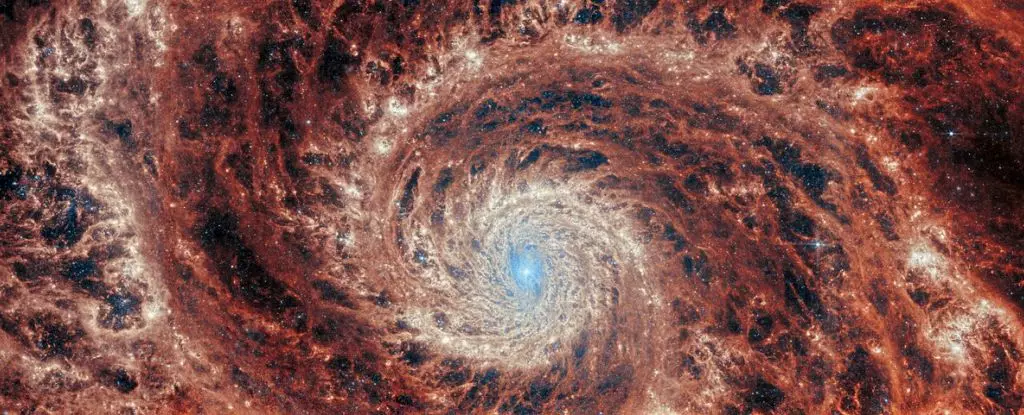The nascent universe, a canvas of chaos and transformation, is becoming increasingly understood through the lens of modern astrophysical tools. Recent discoveries, particularly those made using the James Webb Space Telescope (JWST), are reshaping our comprehension of galaxy formation during the Cosmic Dawn. The identification of a colossal galaxy, named Zhúlóng, has emerged as a focal point in this discourse, challenging long-established timelines regarding the emergence of structured galaxies shortly after the Big Bang.
Approximately 13.8 billion years ago, the universe was born from an explosive event known as the Big Bang. In the aftermath of this initial cataclysm, it took considerable time for matter to coalesce into the galaxies we observe today. Until recently, the prevailing view was that intricate galaxy structures, specifically spirals, formed gradually and later in cosmic history. However, recent observations suggest otherwise, indicating that these formations could have occurred within the first billion years of the universe’s existence.
The revelation of Zhúlóng challenges the traditional timelines associated with galaxy maturation and suggests that well-defined structures emerged far earlier than previously conceived. Led by a research team from the University of Geneva, astronomer Mengyuan Xiao and colleagues believe that Zhúlóng serves as a pivotal marker in the timeline of cosmic evolution.
Zhúlóng, named after the mythical Torch Dragon of Chinese folklore, is characterized by its remarkable structure, embodying what astrophysicists refer to as a grand design spiral galaxy. This classification is reserved for galaxies that display prominently defined spiral arms extending outwards from a bright and concentrated galactic center, serving as an ideal representation of spiral galaxies. With a diameter of approximately 62,000 light-years and a mass akin to that of our Milky Way, Zhúlóng showcases the scale and complexity that astrophysicists are now keen to study.
The discovery of Zhúlóng arose from the JWST’s PANORAMIC survey—an ambitious effort aimed at mapping the early universe. While the survey had previously cataloged various massive galaxies, the defining morphology and structure of Zhúlóng have sparked particular interest. Notably, it possesses a classical bulge reminiscent of quiescent galaxies, alongside a star-forming disk featuring grand spiral arms, all apparent merely one billion years post-Big Bang.
The implications of this discovery are profound. If Zhúlóng is indeed an accurate representation of galaxy formation in our universe’s infancy, it significantly compresses the timeline for the emergence of spiral galaxies. Historically, scientists speculated that the formation of such complex structures took billions of years, aligning with the patterns observed in contemporary galaxies. Zhúlóng, however, emerges at a time when we would not expect such developments, suggesting that a galaxy akin to the Milky Way might form roughly ten times faster than current models predict.
The data surrounding Zhúlóng also offer insights into stellar evolution and black hole dynamics in the early universe. Early estimates place its rate of star formation between 20 and 155 solar masses per year, a figure that hints at a previously overflowing cradle of stellar birth. Moreover, the quiescent state of its central black hole suggests that while stars are forming, there is a deceleration in this rate—a feature that could have long-term consequences for the galaxy’s evolution.
As the scientific community continues to process the findings regarding Zhúlóng, researchers are poised to delve deeper into the data provided by the JWST. Future explorations may enable scientists to detect similar ancient galaxies, further expanding our understanding of cosmic history.
This newfound information not only aims to fine-tune current models of galaxy formation but also prepares the path for upcoming missions that will challenge and refine our grasp of how the universe evolved. Through the lens of discoveries like Zhúlóng, we inch closer to deciphering the profound mysteries of our universe—a celestial puzzle that continues to unfurl as technology advances.
The discovery of Zhúlóng is not merely an isolated event but a significant marker that compels us to re-evaluate our understanding of the universe. As we unravel the complexities surrounding this ancient spiral galaxy, the truths we uncover will likely reshape astrophysical paradigms for generations to come.

